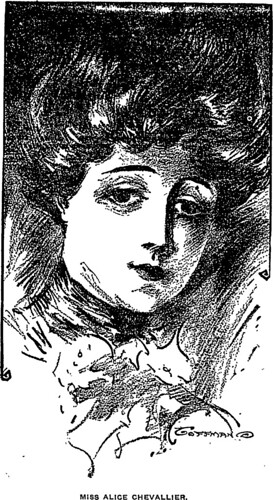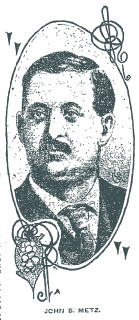
April 20, 1907
Los Angeles
Pity Miss Alice Chevallier, native of this city, who took too powerful a sleeping potion a few evenings past, and now lays rotting in her grave in New Calvary. She follows her mother and her brother, but unlike them, her death brings with it unwelcome notoriety.
Alice was a longtime cashier at the Ville de Paris dry goods emporium on Broadway, between 2nd and 3rd Streets. At some stage in her career, she developed a system by which she could bring home with her a portion of the day’s receipts. In recent months, it is believed this was as much as $300 a day. A clever girl, she invested her takings in real estate, and built a handsome portfolio.
But her ingrained nervousness and peculiar disposition–she did not care for men, and perhaps not coincidentally suffered ovarian tumors, neuralgia and insomnia–proved the thief’s undoing. She found it necessary to escape to Catalina to rest following an operation, although she must have realized that her absense from the place of her crimes would make discovery likely. And that is precisely what happened.
Alice returned to her home at 226 West Jefferson, distraught from a sustained bout of sleeplessness and the anxiety of meeting the Ville de Paris’ lawyers. Although her real estate holdings were now sufficiently valuable to cover any restitution required and more, she languished in a state of abject horror.
On Sunday evening, Alice told her sister-in-law that she intended to take a sleeping powder, but in fact she took laudanum and chloroform, two drugs with which she had significant past experience. This time, the dose was too much for her weakened system, and the girl lingered until Wednesday before expiring. Her doctors stress that although it might look like a suicide, the true cause was congestion of the brain–the same organic disorder that lead her to steal in the first place.



